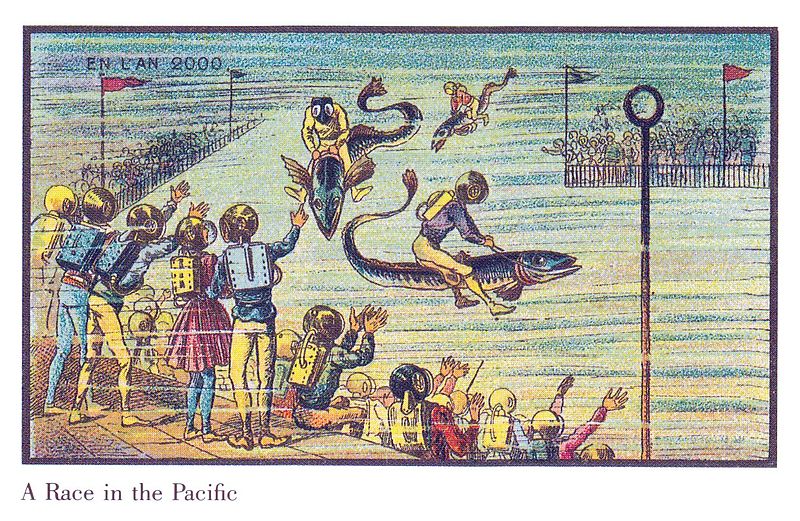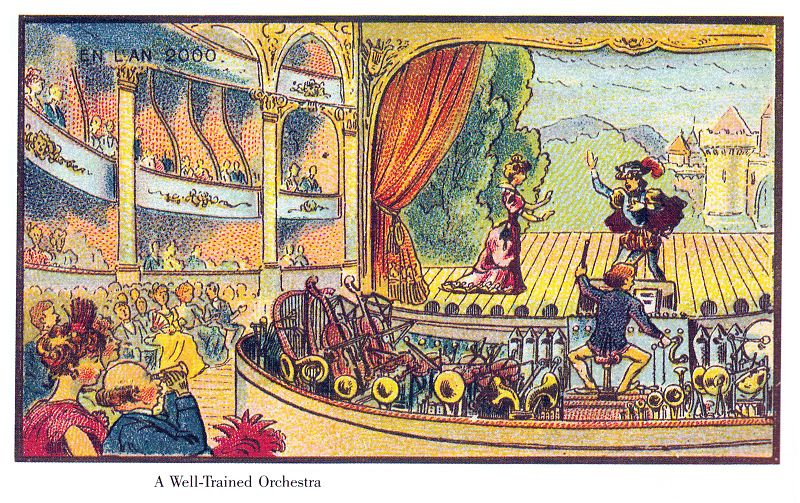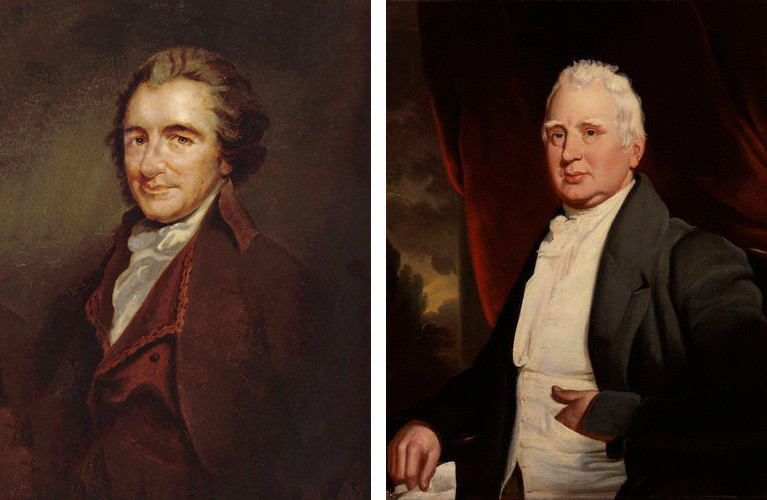
From a 1904 poster: Is the horseman riding away from you, or toward you?

From a 1904 poster: Is the horseman riding away from you, or toward you?

Canadian science writer Grant Allen’s 1889 essay “Seven-Year Sleepers” contains an eye-opening passage:
A certain famous historical desert snail was brought from Egypt to England as a conchological specimen in the year 1846. This particular mollusk (the only one of his race, probably, who ever attained to individual distinction), at the time of his arrival in London, was really alive and vigorous; but as the authorities of the British Museum, to whose tender care he was consigned, were ignorant of this important fact in his economy, he was gummed, mouth downward, on to a piece of cardboard, and duly labelled and dated with scientific accuracy, ‘Helix desertorum, March 25, 1846.’ Being a snail of a retiring and contented disposition, however, accustomed to long droughts and corresponding naps in his native sand-wastes, our mollusk thereupon simply curled himself up into the topmost recesses of his own whorls, and went placidly to sleep in perfect contentment for an unlimited period. Every conchologist takes it for granted, of course, that the shells which he receives from foreign parts have had their inhabitants properly boiled and extracted before being exported; for it is only the mere outer shell or skeleton of the animal that we preserve in our cabinets, leaving the actual flesh and muscles of the creature himself to wither unobserved upon its native shores. At the British Museum the desert snail might have snoozed away his inglorious existence unsuspected, but for a happy accident which attracted public attention to his remarkable case in a most extraordinary manner. On March 7, 1850, nearly four years later, it was casually observed that the card on which he reposed was slightly discoloured; and this discovery led to the suspicion that perhaps a living animal might be temporarily immured within that papery tomb. The Museum authorities accordingly ordered our friend a warm bath (who shall say hereafter that science is unfeeling!), upon which the grateful snail, waking up at the touch of the familiar moisture, put his head cautiously out of his shell, walked up to the top of the basin, and began to take a cursory survey of British institutions with his four eye-bearing tentacles. So strange a recovery from a long torpid condition, only equalled by that of the Seven Sleepers of Ephesus, deserved an exceptional amount of scientific recognition. The desert snail at once awoke and found himself famous. Nay, he actually sat for his portrait to an eminent zoological artist, Mr. [A.N.] Waterhouse; and a woodcut from the sketch thus procured, with a history of his life and adventures, may be found even unto this day in Dr. [S.P.] Woodward’s ‘Manual of the Mollusca,’ to witness if I lie.
This appears to be true: Samuel Peckworth Woodward’s 1851 Manual of the Mollusca contains the portrait above, marked “From a living specimen in the British Museum, March, 1850,” and James Hamilton’s 1854 Excelsior describes the snail’s return to life: “The specimen was immediately detached, and immersed in tepid water. After the lapse of a period not exceeding ten minutes, the animal began to move, put forth its horns, and cautiously emerged from its shell. In a few minutes more it was walking along the surface of the basin in which it was placed. The last time it had exercised its locomotive faculty was in the sandy plains of Egypt, not far from the banks of the Nile.”
Hamilton says it spent the rest of its existence in a glass enclosure, feasting on cabbage and taking an eight-month nap in 1851. It died finally in March 1852. “Such was the end of the Egyptian snail, and it was with some feeling of regret that its death was recorded.”
(Via Metafilter.)

In February 1965, Omaha TV announcer John “Fritz” Johnson was attending an archery tournament in Chicago when a young woman approached him and asked, “Pardon me, but aren’t you my uncle, Larry Bader, who disappeared seven years ago?”
Amazingly, he was. Lawrence Joseph Bader had been a cookware salesman in Akron until March 15, 1957, when he’d gone fishing on Lake Erie and disappeared. Four days later he resurfaced in Omaha as flamboyant bachelor Fritz Johnson, who became a bartender, a radio announcer, and eventually a TV sports director.
Bader had been $20,000 in debt when he disappeared, but Johnson insisted that he had no memory of his former life, and a team of psychiatrists backed him up. “It was like a physical shock,” he said. “Up until that moment, I had no doubt that I was not Larry Bader. But when I heard that, it was like a door had been slammed and somebody had hit me right in the face.”
After his disappearance, Bader had been declared dead, and his wife had collected $39,500 in life insurance. Now she would have to pay that back, and both her new engagement and Johnson’s second marriage would have to be canceled. “I just wish it wasn’t true,” she told Life in March 1965. “We had become adjusted, we had adapted to and accepted his ‘death.’ It was just … well … wrong that this had to happen.”
He died the following year, so it’s still unclear whether his experience was amnesia or a hoax. “I’m very sorry,” he said, “but my doctors have warned me not to try to figure it out by myself. They say it might hurt me.”

The Oxford Companion to the Garden notes a curiosity at Packwood House, a Tudor manor house near Lapworth, Warwickshire:
At some time, possibly in the early 18th century, a mount was made beyond the garden walls to the south on the axis of a gateway in the garden walls and the garden door of the house. Long known as the Sermon on the Mount it is crowned with a single yew with, clustering about it on the slopes, further yews representing the twelve apostles and the four evangelists.
The yews are more than 350 years old, but it’s not clear who devised this setting. A drawing of the garden from the 1700s has survived, but there’s no trace of the mount. The earliest known written description of it appears in Reginald Blomfield and F. Inigo Thomas’ The Formal Garden in England (1892). “Blomfield was told that it represented the Sermon on the Mount by the gardener who was clipping the yews when he visited.”
In 1899, preparing for festivities in Lyon marking the new century, French toy manufacturer Armand Gervais commissioned a set of 50 color engravings from freelance artist Jean-Marc Côté depicting the world as it might exist in the year 2000.
The set itself has a precarious history. Gervais died suddenly in 1899, when only a few sets had been run off the press in his basement. “The factory was shuttered, and the contents of that basement remained hidden for the next twenty-five years,” writes James Gleick in Time Travel. “A Parisian antiques dealer stumbled upon the Gervais inventory in the twenties and bought the lot, including a single proof set of Côté’s cards in pristine condition. He had them for fifty years, finally selling them in 1978 to Christopher Hyde, a Canadian writer who came across his shop on rue de l’Ancienne-Comédie.”
Hyde showed them to Isaac Asimov, who published them in 1986 as Futuredays, with a gentle commentary on what Côté had got right (widespread automation) and wrong (clothing styles). But maybe some of these visions are still ahead of us:

















In 1914, the rim of the New Zealand volcano Whakaari collapsed, burying a sulfur mining operation and killing 10 men.
“Remarkably, there was one survivor: the camp cat, Peter the Great,” notes Sarah Lowe in New Zealand Geographic. “The cat returned to Whakatane, perhaps with one life less, but with unimpaired virility: many Whakatane cat owners trace their pet’s genealogy back to this hardy beast.”
It’s sometimes said that a cat named Tibbles dispatched the last living Lyall’s wren from Stephens Island, also in New Zealand, making her the only known individual to have extirpated an entire species. It’s more likely that a colony of feral cats overran the island, the birds’ last refuge. But maybe one of them was named Tibbles!
In his notebook, Mark Twain wrote, “A cat is more intelligent than people believe, and can be taught any crime.”

The Mercantile Library of Cincinnati has a 10,000-year lease. When Cincinnati College burned in 1845, the young men of the city’s Mercantile Library Association helped to rebuild it. As a reward, the library was given a lease of ten millennia on the 11th and 12th floors of the Mercantile Library Building in downtown Cincinnati.
The current lease will expire in the year 11845 — but it’s renewable.

In 1824 the viceroy of Egypt sent a unique gift to the new king of France: a two-month-old giraffe that had just been captured in the highlands of Sudan. In this week’s episode of the Futility Closet podcast we’ll follow the 4,000-mile journey of Zarafa, the royal giraffe, from her African homeland to the king’s menagerie in Paris.
We’ll also visit Queen Victoria’s coronation and puzzle over a child’s surprising recovery.

Thomas Paine came to an ignominious end. The revolutionary activist so inspired English journalist William Cobbett that Cobbett dug up his bones in 1819 and transported them back to England, hoping to give Paine a heroic reburial in the land of his birth. (G.K. Chesterton wrote, “I wonder what he said when asked if he had anything to declare?”)
But Cobbett never got around to it. When he himself died in 1835, Paine’s bones were still among his effects, and they’ve since been lost: His skull may be in Australia, his jawbone may be in Brighton, or maybe Cobbett’s son buried everything in the family plot when he couldn’t auction it off. In 1905 part of his brain (“resembling hard putty”) may have been buried under a monument in New Rochelle, N.Y. But no one knows for sure.

Six kilometers south of Dunhuang in western China lies Crescent Lake, an oasis that once served as a waypoint to the West along the Silk Road. British missionaries Mildred Cable and Francesca French recorded their first sight of it during their travels through the Gobi Desert in the 1920s:
All around us we saw tier on tier of lofty sand-hills, giving the lie to our quest, yet when, with a final desperate effort, we hoisted ourselves over the last ridge and looked down on what lay beyond, we saw the lake below, and its beauty was entrancing.
The lake survived for 2,000 years thanks to its low altitude and sheltered position, but it began to shrink in the 20th century due to population pressures — its depth dropped from 7.5 to 0.9 meters between 1960 and the early 1990s. In 2006 the government stepped in to reverse the decline, and now it’s growing again.
(Via eMORFES.)